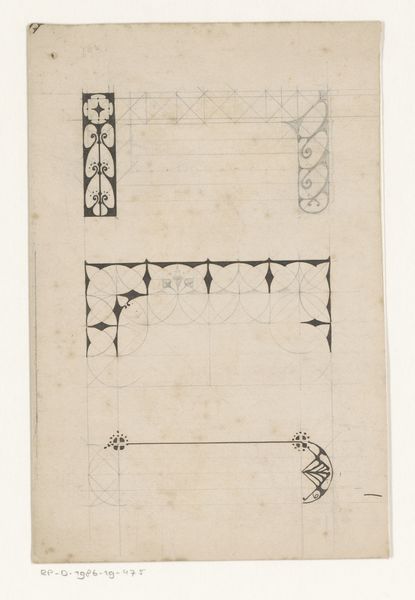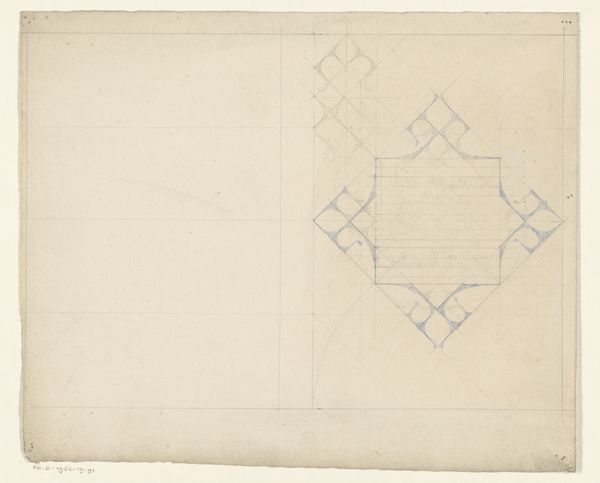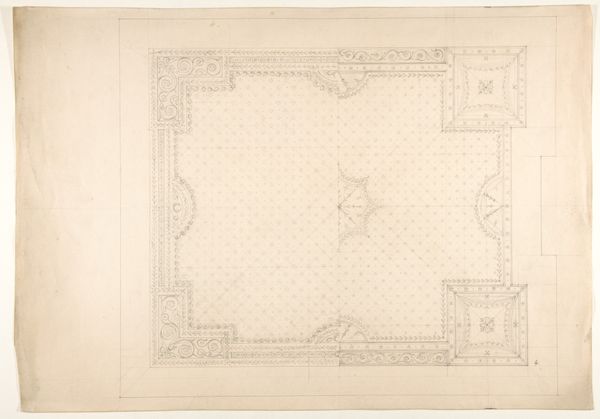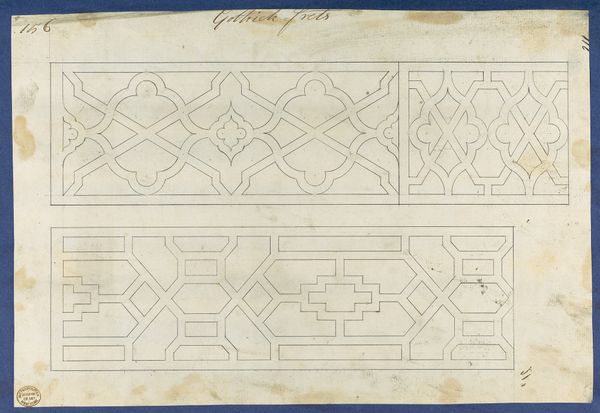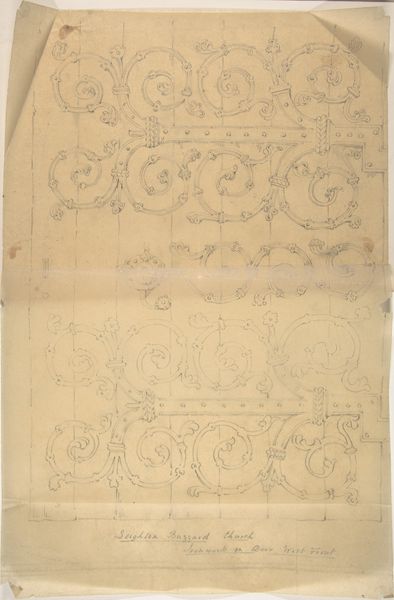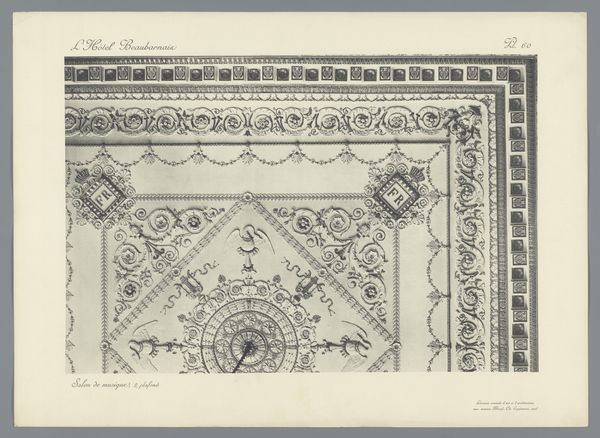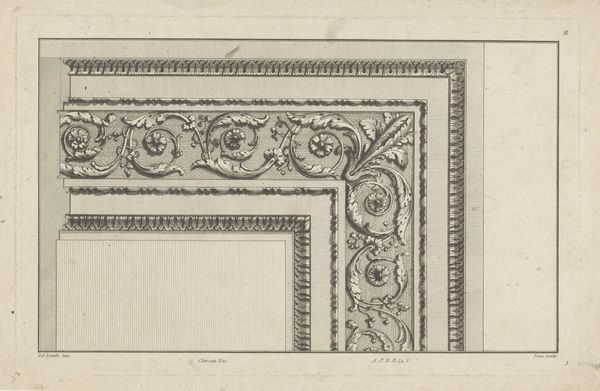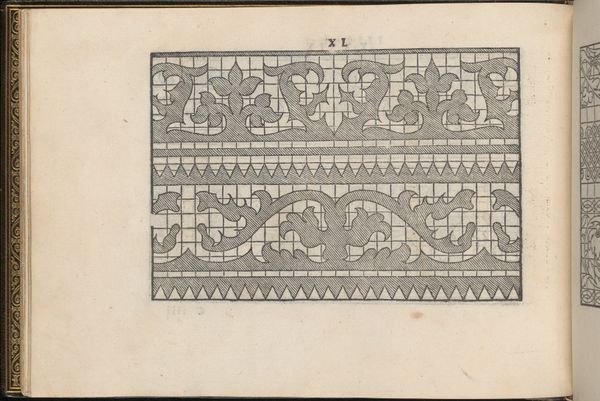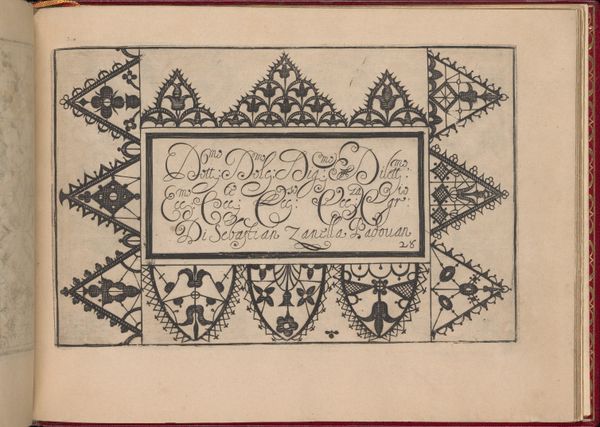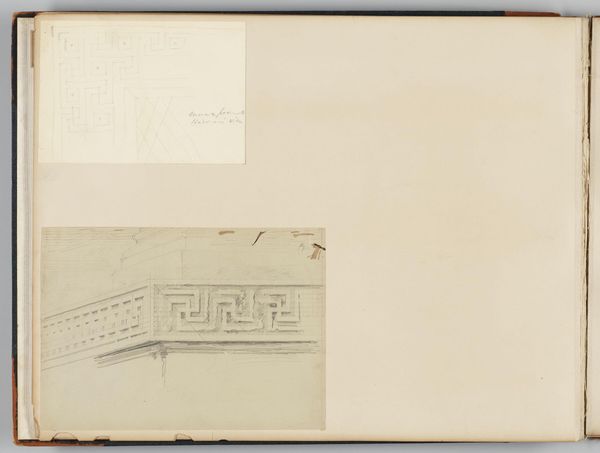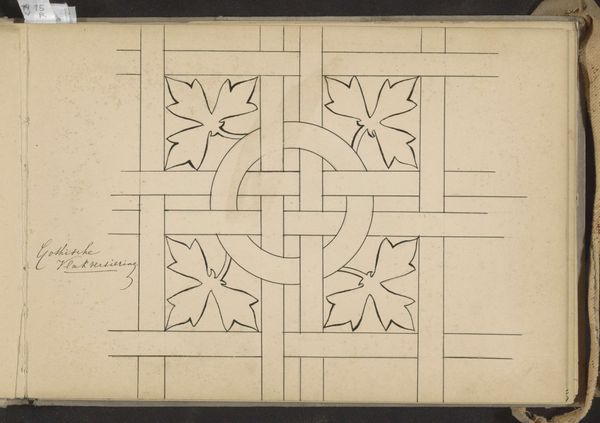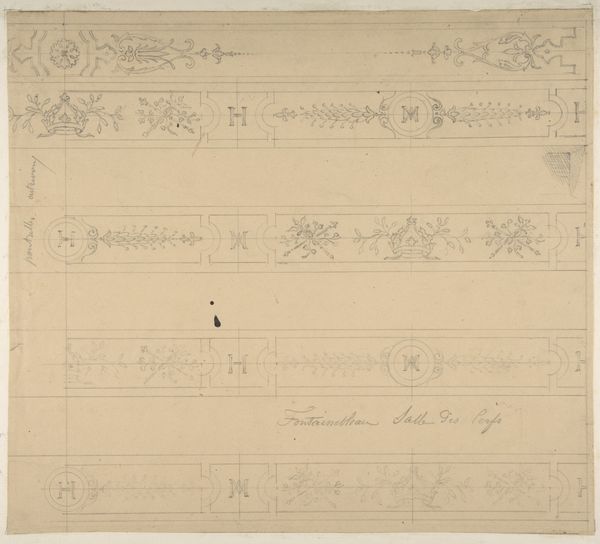
Design for a Ceiling for the Drawing Room at Milton Abbey, Dorset 1770 - 1774
0:00
0:00
drawing, print, etching, pencil, architecture
#
drawing
#
neoclacissism
# print
#
etching
#
etching
#
geometric
#
pencil
#
decorative-art
#
architecture
Dimensions: sheet: 16 1/2 x 12 7/8 in. (41.9 x 32.7 cm)
Copyright: Public Domain
Curator: This delicate rendering, executed in pencil, etching, and print, offers us a glimpse into the mind of Sir William Chambers, showcasing his "Design for a Ceiling for the Drawing Room at Milton Abbey, Dorset", dating from 1770-1774. Editor: Well, if I didn’t know better, I'd say it's a ghostly blueprint! All those faint lines, like faded whispers from another century attempting to fill a space with quiet, ornate secrets. I'd almost be scared to inhabit that room, to mess with its spectral calm. Curator: Chambers was a leading figure in Neoclassicism, heavily influencing British architecture. We can see this in the drawing’s symmetrical precision, the geometric patterns rendered meticulously, and the delicate floral ornamentation contained within its structure. Think of the labor involved, not just Chambers's intellectual input, but the many artisans needed to bring this design to life. Editor: Ah, yes, the unseen hands! Makes you think about the hierarchy, doesn't it? Sir William dreaming up these gorgeous patterns, then countless laborers tasked with chiseling, painting, all under his vision and for someone else's leisure. And now it lives on, confined in this pale drawing, all its former use extracted, just its geometric carcass presented for our consumption. The very air in the actual room must have buzzed with tension! Curator: Yet the materials themselves – the very pigments ground, the plaster mixed – dictated a certain aesthetic, creating a texture and luminosity a computer rendering could never replicate. These aren't abstract ideas, but real substances, subject to the forces of time, demanding specific skills for their manipulation and placement. Editor: And there’s such vulnerability to this pre-digital art. Look at how light those pencil lines are, so liable to fading and smudging. It speaks to a transient understanding of artistry, where maybe ideas held more weight than the physical product itself. I find a certain beauty in the inherent fragility. I'd want a ceiling with that weight in my life: delicate. Curator: It reminds us to consider the economic and social conditions that enabled such lavish decoration, from material extraction to craft guilds. Even today, our response to this drawing is shaped by these structures of power and consumption. Editor: Hmm, maybe so. To me, this artwork serves as a delicate, ephemeral meditation. Maybe I should bring my paints next time to give this room an extra dimension… Curator: That's quite a thought! I’ll let you get away with it, so long as we bring our perspectives back.
Comments
No comments
Be the first to comment and join the conversation on the ultimate creative platform.
